Van Gogh Museum Journal 2003
(2003)– [tijdschrift] Van Gogh Museum Journal–
[pagina 70]
| |
 fig. 1
Vincent van Gogh's sketch of La mousmé (F 1722 JH 1521), c. 23 July 1888, given to and inscribed by Paul Gauguin, cut out and pasted on to the title page of Gauguin's Diverse choses manuscript (p. 205 of the Noa noa album), 1896-97, Paris, Musée d'Orsay | |
[pagina 71]
| |
Gauguin as author: writing the Studio of the Tropics
| |
[pagina 72]
| |
these dreams that he left Paris in 1891, and with which he pursued his atelier des tropiques over the next 12 years, first in Tahiti, and then ultimately in the Marquesas, on the island of Hiva Oa. Gauguin's ideal was of course tested in the very real and complex crucible of colonial life in the tropics. In the end he went alone, unable to convince any artist to accompany him from France. But his original goal of finding an exotic retreat to nurture his art, and of creating a mystique about his work from this new location, held firm throughout his Polynesian career. There were no artists in Tahiti to populate his atelier; the only candidates proved ineffectual as creative cohorts.Ga naar voetnoot6 His project became a more singular one. His art would speak for him back in Paris. And he soon discerned that in writing came power: he could control, or at least shape, the representation of his art and his avant-garde project of living the ‘savage’ life in the colonies. | |
The painters as writersWith his move to Tahiti, Gauguin began to cultivate a secondary career as a writer.Ga naar voetnoot7 It was not one to supplant his visual art, but rather one by which he could shape the reception of his work with the distant audience that mattered most: the artists and dealers of the avant-garde and the writers affiliated with the symbolist movement. It is well established, by Vojtĕch Jirat-Wasiutyński, and others, that by the end of 1890 Gauguin had been brilliantly received within the circles of symbolist poets and critics in Paris. He linked up with poets around Aurier, including Jean Moréas, Rémy de Gourmont, Julien Leclercq and Charles Morice, who was to become his most important literary collaborator.Ga naar voetnoot8 Gauguin was ambitious and astute in using his literary connections to generate good press for himself, as seen in essays by Octave Mirbeau for both L'Echo de Paris and Le Figaro. From the start Gauguin saw the clear value of these writers in helping him to produce a marketable persona and a mystique, both of which he needed to be powerful enough to sustain his physical absence from Paris. Not everything he would write was intended for publication. Like Van Gogh, he penned copious letters to his family (for a while) and to the friends upon whose support he could depend. Illustrated albums finished on the first Tahitian trip - Cahier pour Aline and Ancien culte mahorie - were highly personal efforts that he kept with him until his death. But beginning with Noa noa, which he first drafted after his return to Paris in 1893, he began to pursue the publication of a number of manuscripts. His intended audience was not the mainstream Parisian collector or amateur. He meant some writings to either inspire fellow symbolist artists or to counter his critics; his close reading of the Mercure de France while living in Polynesia kept him aware of the rising legend of Van Gogh and of the boastful Emile Bernard, who was writing missives from his new orientalist atelier in Cairo in the 1890s. He clearly wanted to make his mark in the symbolist literary circle that had helped launch him on his Tahitian sojourn in 1891: critical success in that venue would secure him both reputation and, perhaps, increased sales. He cultivated his Parisian contacts in the art world to further his written work, sending two major manuscripts to the art critic André Fontainas with the hope they would find publication in the pages of the Mercure de France.Ga naar voetnoot9 In | |
[pagina 73]
| |
spite of conflicts with younger co-author Charles Morice over Noa noa, Gauguin dedicated one of his last major manuscripts to the young symbolist writer. Gauguin sent a special collection of his own satirical newspaper, Le sourire, to fellow artist Georges Daniel de Monfreid before leaving Tahiti for the Marquesas.Ga naar voetnoot10 It was the thought of this critical audience at home - the artists, critics, collectors and supporters in Paris - that spurred him to keep pen to paper in Polynesia, especially in the last years when illness compromised his artistic endeavours, and he grew increasingly concerned over how history would (or would not) come to reflect on his efforts. In some measure, Gauguin owed his growing literary ambition to his relationship with Vincent, which remained fresh in his memory even into the Marquesan years. The weeks in the Yellow House had been a time of dialogue, painting and writing. Letter writing had been a ritual of daily life; on some days Vincent even wrote twice to Theo [687/539]. The artists wrote to sustain ties to the distant art community: Theo, Bernard and Schuffenecker. As Wouter van der Veen has demonstrated, letters also permitted Vincent to recompose his past with Gauguin when face-to-face relations between the artists could no longer be sustained.Ga naar voetnoot11 Van Gogh was a more private writer than Gauguin proved to be. Vincent's letters remained unpublished in his lifetime, and the artist probably did not write them with an eye to their publication.Ga naar voetnoot12 Yet Van Gogh's passion for expressing his thoughts on art in literary statements was consistent with his obsession for the ordered presentation of his work. It also fits with his abiding love for literature, evident in the numerous still lifes of books and pictures with literary references.Ga naar voetnoot13 Gauguin no doubt observed Vincent's particular love for such artist-writers as Delacroix, and such aesthetes as the literary brother-team the Goncourts. Van Gogh's passion for literature and his talent for writing are surely among the factors that spurred the competitive Gauguin to become so active in this field in the final decade of his own career. That Gauguin cherished Van Gogh's letters is evidenced by the title page of Diverse choses, compiled in Tahiti in 1896. The title page pays homage to the Studio of the South, as Gauguin features not his own work (which one might expect in a such personal account), but rather a drawing of La mousmé clipped from one of Vincent's letters (fig. 1). Van Gogh imposes on an adolescent Arlésienne the identity of a mousmé or Japanese girl of marriageable age. Years later in Tahiti, when Gauguin featured this letter in his manuscript, he both paid homage to Vincent the writer and to the artistic legacy of their Studio of the South - a legacy he now sought to expand in Polynesia. Nonetheless, in 1890 Gauguin failed to put his writing talents to the task of establishing Van Gogh's life and work for posterity; he was always one to put his own goals first. He was neither as active nor as generous as Bernard, who published articles and organised two exhibitions of Vincent's work soon after the artist's death.Ga naar voetnoot14 On the contrary, in the wake of Vincent's demise, Gauguin distanced himself from his friend, clearly fearful that his own art might be swept under the shared critical umbrella of the ‘madness’ of the avant-garde.Ga naar voetnoot15 At first, Gauguin intervened in discussions of Vincent only to turn the critical tide to his own favour. By 1891, Pissarro would complain | |
[pagina 74]
| |
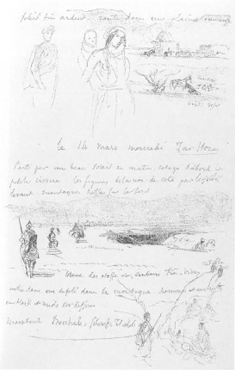 fig. 2
Eugène Delacroix, ‘Sketch of Morocco,’ 1832, reproduced in Journal de Eugène Delacroix, Paris 1893, vol. 1, facing p. 168 that Gauguin had managed to get himself elected a man of genius.Ga naar voetnoot16 This ascendancy came, in part, at the price of positing Vincent as insane. As Gauguin returned to Paris in the winter of 1893, he engaged both in writing his own romanticised journal Noa noa and in coming to terms in writing with Van Gogh's life, as his own fortune was by now inextricably linked with that of the deceased artist. Gauguin's essay Nature mortes followed hard on the critical example of Albert Aurier. Gauguin's text drives home the notion that Vincent was ‘decidedly’ already mad by the Arles period.Ga naar voetnoot17 Gauguin wrote about Arles again in Avant et après in 1902. At that time, long after Van Gogh's death, he would pen himself as the compassionate friend who forgave Van Gogh his violent aggressions and who brought order and maturity to Vincent's world.Ga naar voetnoot18 Beatrice von Bismarck has astutely examined the norms and values of Gauguin's self-serving account of the friendship.Ga naar voetnoot19 In spite of his assertions that he was not a professional writer, Gauguin invested precious time, especially at the end of his life, in shaping his own biography and reputation. | |
Imagining Noa noaDuring the first Tahitian trip of 1891-93 and on his sojourn back to France, Gauguin produced three illustrated manuscripts: Cahier pour Aline, Ancien culte mahorie and Noa noa.Ga naar voetnoot20 Each is an album filled with his own writings, quotations from other texts and a collage of illustrations that he drew, painted, printed, or clipped from other sources. These texts freely mix reflection, travel, fantasy and fact: they are idiosyncratic journals of his Studio of the Tropics. Noa noa, the only one of Gauguin's manuscripts to be published during his lifetime, appeared in excerpts in La Revue Blanche in 1897 and then in an un-illustrated La Plume edition in Paris in 1901.Ga naar voetnoot21 Noa noa is a mythical and poetic account of Gauguin's first trip to Tahiti. It does not directly concern the making of art, although the subjects of his pictures are described in literary tableaux. Written to provide his Parisian audience with an entry point to his art after critics had perceived his work at the Durand-Ruel exhibition of 1893 as inscrutable and esoteric, Noa noa draws on a heterogeneous fabric of texts and influences. Just as Gauguin's aesthetic taste ran the gamut from Giotto to Hokusai to Daumier, his literary tastes were profoundly eclectic. To borrow the term Pissarro applied to Gauguin's painting practice, the artist ‘pillaged’ both elite and popular textual sources. This text has been thoroughly studied in its symbolist context.Ga naar voetnoot22 Gauguin wrote a first draft and then collaborated extensively with poet Charles Morice, with whom he eventually co-authored the publication of Noa noa in France. The creative tensions of the Yellow House echoed in Gauguin's fraught relationship with Morice, as he seemed to desire submission and deference from both his | |
[pagina 75]
| |
artistic and literary collaborators. A second well-known point of reference for Gauguin was surely the exotic novel that had partly inspired the Tahitian subject and narrative structure of the work: Pierre Loti's Le mariage de Loti, a tale of love in paradise between a European sailor and a Tahitian vahine. Gauguin's tale echoes Loti's Eurocentric and colonialist nostalgia for an allegedly fading culture.Ga naar voetnoot23 A third reference point is undoubtedly Delacroix. In 1891 the Louvre had acquired his album of notes and watercolours compiled in North Africa in 1832. Moreover, Delacroix's journal, first published in 1878 and again in a new edition in 1893, intrigued not only Gauguin but his entire generation. Volume one records the artist's famous trip to Morocco, his infatuation with the landscape, the light and the women, and his position of privilege as a French artist on a government mission. It also reproduces a page of the Morocco album (fig. 2) - a precious relic of the romantic individual's sensations captured ‘en route’ - and the whole is an idiosyncratic mix of sketches, notes and details of travel that Gauguin emulates in Noa noa. The preface to the Journal praises the work as a collection of true ‘literary morsels’ that reveal, in the intimate Delacroix, a spirit, an intelligence, a character of superior quality.Ga naar voetnoot24 Gauguin's ambitious nature was no doubt seduced by this clear demonstration of the benefits of leaving such a personal account and compelling visual record for the generations of artists to come. A well-known connection also exists between Gauguin's text and the ethnographic account of Tahiti by the Belgian explorer Moerenhout.Ga naar voetnoot25 In Noa noa (and earlier in his notebook Ancien culte mahorie), Gauguin copied passages directly from this source into his text, offering up bold plagiarism from the ethnographic record as first-hand knowledge, supposedly gleaned from his Tahitian mistress Teha' amana. His quotation of such European narratives offered both an illusion of control and a gloss of authenticity to his account of a foreign religion, which attracted him largely because it remained mysterious and inaccessible. A fully vernacular context for Gauguin's production of Noa noa is the genre of the souvenir travel album of the sort compiled by sailors on sea voyages, often to be presented as gifts either to their families or naval superiors at home. This was a rich tradition of popular visual culture that Gauguin already knew well from his youthful days in the merchant marine. Yet in the creation of Noa noa he was probably inspired by one such album in particular. On his voyage home to Paris in 1893, Gauguin kept close company with naval officers on the Duchaffault, en route to Noumea, before switching to the steamer Armand Béhic to return to France. One of these officers, A.P. Godey, Commissaire de la Marine, was assigned to the Duchaffault from 1891-93 and also travelled on the Armand Béhic back to Marseilles on the same voyage as Gauguin. In the final pages of Noa noa, Gauguin lists him as one of the people with whom he spent time.Ga naar voetnoot26 Godey put together a travel album of sketches, photographs, a diary and quotations from local songs and lore throughout his long Oceanic voyage. In it, Gauguin may have found inspiration both for his own album and for its title, Noa noa, a phrase that means not only fragrant, but which also connotes a quality of indolence and voluptuousness. Godey's page recalling the sailors' frolic in an island river | |
[pagina 76]
| |
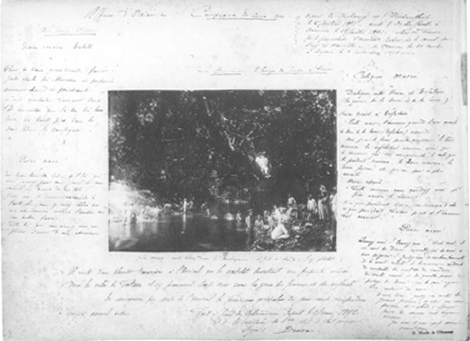 fig 3
Godey's ‘Album Océanie,’ ‘Le croiseur Duchaffault [Crew bathing in a river near Papeete, Tahiti],’ June 1893, p 2, Paris, Bibliothèque nationale de France, Cabinet des estampes is inscribed with a poem entitled ‘Tiare Noa noa Tahiti’ (fig. 3). Gauguin may have recognised in this poem a concept he had often encountered in his two years on the island - that is, a world of no'ano'a, one that is very full of opulence, the perfumes of life and nature, rich in potential and commanding the greatest interest.Ga naar voetnoot27 In the Godey album, photographs invoke the transient dalliance between sailor and indigenous woman, while the poem celebrates one of the faded tiare flowers as an ‘[...] ardent symbol of love in this happy island [...].’Ga naar voetnoot28 Many pages of Gauguin's album, put together back in France in 1893-95 (or soon after his return to Polynesia in 1895), restate these topoi of island beauties, transient pleasures and mythic encounters with love and the women of Polynesia. Moreover, Gauguin's own eclectic collages of watercolour, woodcuts and purchased photographs used to elaborate the work recall the visual play of the heterogeneous sailors' travel albums (fig. 4). A somewhat unexpected literary point of reference in Noa noa are the writings of the artist's grandmother Flora Tristan (1803-1844) (fig. 5). She is perhaps best known as a utopian socialist and feminist, and this aspect of her legacy indeed holds relevance for Gauguin. She was also an accomplished narrator of exotic travel experience, both in her first book Les pérégrinations d'une paria (1838), which recounts her travels in Peru and in | |
[pagina 77]
| |
 fig. 4
Paul Gauguin, Noa noa, c 1893-97, p. 57, Paris, Musée du Louvre, Cabinet des dessins Promenades dans Londres of 1840. Gauguin so admired the former volume that he loaned it to Bernard and demanded its return before his departure from France.Ga naar voetnoot29 Tristan had, like Gauguin, left her young family in France to travel abroad, in her case to London, Switzerland and Peru. In Pérégrinations, she accentuates the encounters of a European with foreign culture and champions the superiority of the beauty, grace and seductiveness of the women of Lima over their northern counterparts. For example, a passage from Tristan's chapter on the women of Lima 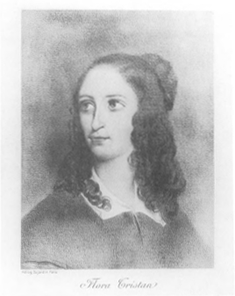 fig. 5
After Jules Laure, Flora Tristan, 1847, from J.L. Puech, La vie et l'oeuvre de Flora Tristan, 1803-1844, Paris 1925 celebrates the greater liberty of the Peruvian woman: ‘[...] one can easily see that [the Lima women] must have a set of ideas quite different from those of their European sisters, who from childhood are slaves to laws, values, customs, prejudices, styles and everything else; whereas under the saya [the Peruvian costume of a skirt and a manto covering shoulders and head], the Lima woman is free and enjoys her independence. [...] The woman of Lima, whatever her position in life, is always herself; never is she subject to constraint.’Ga naar voetnoot30 | |
[pagina 78]
| |
In Noa noa, Gauguin adopts a similar rhetoric of cross-cultural comparison to denigrate the restrictions imposed on the female body by fashion in Europe: ‘Among people who go naked, as among animals, the difference between sexes is less evident than in our climates. We accentuate the weakness of woman in guarding her from fatigue, that is to say, from the possibilities of development, and we model her after a false ideal of slenderness.’Ga naar voetnoot31 At this point in his career, Gauguin was probably little concerned with woman's liberties, except as social convention ruled sexual behaviour. Both Gauguin and Tristan were heirs to the Enlightenment legacy of Rousseau and Montaigne, who had used cross-cultural rhetoric that drew on agrarian and tribal societies to foreground the ills of modern Europe. Gauguin knew this literary tradition through the travel writings of his freethinking writer-grandmother, who had used her exotic sojourns to frame her critique of the conventions of the bourgeois society of her time. | |
In the Marquesas: writing for posterityIn Tahiti, following the completion of his major work Where do we come from? What are we? Where are we going? (1897-98, W 561, Boston, Museum of Fine Arts) and the related works shown at Vollard's gallery in 1898, Gauguin's painting entered a slump. The artist's health was poor and he was forced by economic need to take a dull job as a low-level draughtsman in the public works department from the spring of 1898 until January 1899. By the next summer, he had recovered his energies and made a serious foray into the craft of journalism, which had been the career of the radical Republican father he had barely known. As a writer and then editor-in-chief of the pro-Catholic newspaper Les Guêpes, and as the founder and editor of his own satirical journal Le sourire, Gauguin entered with verve into the goldfish bowl of colonial politics in Papeete between 1899 and 1901. This activity seems to have given him the voice and a public position he had heretofore been denied by the French colonial community. The locals might not appreciate his painting, but they snapped up the papers with their barbed editorials attacking the Protestant community. Journalism also provided Gauguin with a source of much-needed income. This chapter of his literary career, beyond the scope of this essay about his longer manuscripts, still begs for scholarly study.Ga naar voetnoot32 His commitment to journalism was, however, short-lived.Ga naar voetnoot33 The new stipend from Vollard, agreed to in March 1900, had purchased him important creative freedom, and in a little over a year he left Tahiti for the last time, editing his ultimate issue of Les Guêpes just one month before his departure.Ga naar voetnoot34 For Gauguin, the village of Atuona on the island of Hiva Oa in the Marquesas was a writer's retreat as much as it was an escape from the colonial modernity of Papeete and a fresh start in the Polynesian world. During his final two years, he was as engaged in writing as he was in painting and sculpture. At his death in 1903, the inventory of his estate sale included 13 manuscripts (of which only five exist today).Ga naar voetnoot35 We know Gauguin completed at least three manuscripts in his 21 months on Hiva Oa: Racontars de rapin (Gossip of an art dauber), L'esprit moderne et le catholicisme (Modern thought and Catholicism) and Avant et après (Before and after). He had started the first two while still in Tahiti, and he now found the desire and energy to return to them in Atuona. He continued to care deeply about his status as a published author. In his last years, his interest in the publication of Noa noa in France became obsessive. Unpublished correspondence from 1902 finds him in the Marquesas begging friends to mail him a copy of the published book.Ga naar voetnoot36 It is yet one more irony of his literary career that he never saw Noa noa in print.Ga naar voetnoot37 Nonetheless, in these last literary projects he was able to set out his thoughts on a wide variety of topics, including art, history, religion, the origin of the human spirit and the events and meaning of his life. Many of the concerns he addressed in his painting manifesto Where do we come from? are taken up again in essay form.Ga naar voetnoot38 These texts thus comprise a testimony to the Studio of the Tropics. | |
Racontars de rapinAs early as October 1898, while waiting in Tahiti to hear the response to Where do we come from? and while reading the Mercure de France, Gauguin began to set down his reflections on the century's developments in both art and history. He continued sporadically with this exercise over the next four years, finishing in September 1902. The result was Racontars de rapin, a 14-page, un-illustrated essay that is rambling and entirely lacking in organisation.Ga naar voetnoot39 In the fall of 1902 he sent it to Fontainas in Paris, in an unsuccessful effort to have it published in the Mercure | |
[pagina 79]
| |
de France. He here employs a strategy of opposition devised in primitivist rhetoric. He contrasts artist and critic, history and modernity, and the notions of what is revolutionary and traditional or conventional. In the opening lines he claims the voice of an artist, as opposed to a man of letters, who is going to speak on art; he also characterises his text not as a duty, ‘un devoir,’ but as a fantasy. He thus allows himself the liberty of writing freely, in no particular order, in a space between all poles, on matters of modern art, criticism, art history (Rembrandt to Burne-Jones), museums and French revolutionary history. He sets these European musings against a few bizarre descriptions of ‘native life’ in the Marquesas - a cannibal who opens sardine cans with his ferociously sharp teeth, and a blind woman who leaves her home in the bush to approach Gauguin in order to examine his sexual parts. Oddly, he relocates the story from his actual home at Atuona, on the island of Hiva Oa, to his early days, which he falsely claims to have spent on Fatuiva, near a ‘simple hut of bamboo.’Ga naar voetnoot40 He thus further exoticises his narrative, placing the tale in an even more remote and less Europeanised island than Hiva Oa, the one on which he actually lived.Ga naar voetnoot41 Such interjections, fictional in part or whole, are Gauguin's fantastic excursions back from matters urban and artistic to the exotic and the extraordinary. He includes them to make his account all the more individual, eccentric and, by inference, himself more authentic as a spokesperson for the avant-garde. He validates himself through linkages to the great chains of history (if an artist ‘adds one new link to the chain that has already been begun, that in itself is a great deal’), yet he determines that too much connection with history, with academic technique (which he derides as the Volapuk, Esperanto, or formulaic language of mediocre art), or with bureaucracy helps only the uninspired artist, and enforces ‘a terrible torment for men of genius’ such as Delacroix and, by extension, himself.Ga naar voetnoot42 We can draw a comparison between his anger at the power of the state and his fury over the corruptions of the Catholic Church, which are a focus of the next major treatise he completed in the Marquesas. | |
L'esprit moderne et le catholicismeRacontars de rapin was not the only old writing project to which Gauguin returned while in the Marquesas. He again took up the treatise he had begun in Tahiti in 1897 as the 37-page essay L'église catholique et les temps modernes, which formed a part of the Diverse choses manuscript he inserted at the end of the Louvre Noa noa album. In 1898-99 Gauguin made the woodcut prints that he later attached to the cover of the notebook, but he did not finish copying over and expanding the manuscript, or make the monotypes for the cover, until he was in the Marquesas.Ga naar voetnoot43 In the text, he addresses matters of comparative | |
[pagina 80]
| |
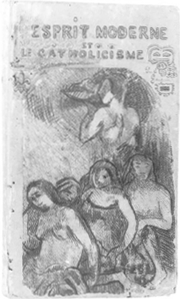 fig. 6
Paul Gauguin, outside cover of L'esprit moderne et le catholicisme, transfer drawings (traced monotypes) made in 1902, The Saint Louis Art Museum, gift of Vincent L. Price, Jr in memory of his parents, Marguerite and Vincent L Price religion, the origins of the Christian faith and the corruption of spirituality by the institutions of the Catholic Church. When he returned to the manuscript in 1902, he renamed it L'esprit moderne et le catholicisme (figs. 6 and 7).Ga naar voetnoot44 At this time, he expanded the essay and decorated the cover with woodcuts, monotypes and transfer drawings. The cover suggests the hybrid ideas on religion found inside. On either side of the title are signs of the dual religious cultures he discusses: on the left, the fleur-de-lis of France and its Catholic institutions; at the right, the Maori-inspired glyphs that surround his own name. Gauguin had, to be sure, strategic motivations for revising this essay in 1902. He had recently learned of Morice's plan to sell Where do we come from? to a group of 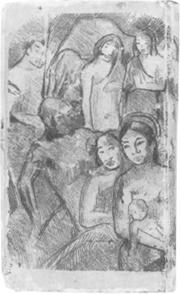 investors, with the aim of donating it to the French state.Ga naar voetnoot45 Gauguin revised the text in part to lend further credit to himself and to his painting in France. But not withstanding his habits of self-promotion, we should accept this text as a sincere effort at theological inquiry and social criticism. Debora Silverman has emphasised the role of Gauguin's early Catholic seminary experience in drafting the first version of this text. She argues that his biblical quotations and modes of argument reflect his youthful training at the Petit Séminaire de La Chapelle-Saint-Mesmin, near Orléans. These years, she claims, resulted in the abiding imprint of Catholic education on his ‘assumptions, language and habits of argument.’Ga naar voetnoot46 She reveals how his education gave him a rigorous grounding in Catholicism, and the catechistic formulae gave him an interrogatory language for examining the spiritual. Yet our perspective needs also to include the impact of the alternative religious traditions that nourished Gauguin in his | |
[pagina 81]
| |
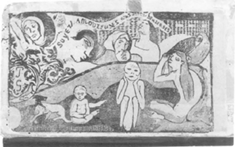 fig. 7
Paul Gauguin, inside cover of L'esprit moderne et le catholicisme, woodcut prints on japan paper, 1898-99, manuscript completed 1902, The Saint Louis Art Museum, gift of Vincent L. Price, Jr in memory of his parents, Marguerite and Vincent L. Price critique of the rigidity and dogmatism of Catholicism. Of central importance to this manuscript of his last years is the context of his encounter with missionary Catholicism in Polynesia and his exposure to spiritualism and theosophy, some of whose texts he quotes directly in L'esprit moderne. In addition, in his agenda of social reform, particularly regarding the areas of marriage and prostitution, he moves far outside any formative tenet of Christianity, instead recalling the socialist utopian writings of his grandmother, Flora Tristan. It is within these literary contexts that we can best position Gauguin's L'esprit moderne: as a manifesto that critiques social and religious institutions while attempting to make spirituality once again amenable to the modern age. 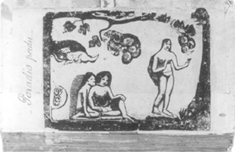 Gauguin's text surveys various religious explanations of the meaning of life, interweaving Christian, Tahitian and Hindu creation stories. It was in Brittany in 1889-90 that Gauguin was probably introduced to theosophical thought, through his association with Ranson and Sérusier. As Robert Welsh reminds us, while we cannot know definitively if Gauguin read theosophical texts prior to his departure for Tahiti, one of his letters to Schuffenecker suggests a limited knowledge of occultist | |
[pagina 82]
| |
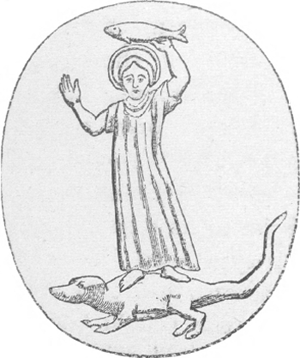 fig. 8
Christ Horus, from Gerald Massey, The natural genesis, London 1883, vol. 1, p. 454 numerology as early as 1885.Ga naar voetnoot47 Moreover, it is clear that by 1889-90 his colleagues in Pont-Aven had been thoroughly exposed to esoteric literature.Ga naar voetnoot48 Of interest to the Pont-Aven circle were the writings of Madame Blavatsky, a formidable magus of spiritualism, and Schuré's Les grands initiés, published in 1889. Gauguin's growing attraction to mysticism and esoteric religion dates to the period just following the tenure of the Studio of the South, although as Druick and Zegers point out, Van Gogh and Gauguin had discussed some esoteric Christian symbols, such as Ictus, in their final days in Arles, and a letter from Vincent written to Gauguin after his departure even reproduces this esoteric sign.Ga naar voetnoot49 More than a decade later in Tahiti, writing L'église catholique, Gauguin again pursues an interest in spiritualism and comparative religion, and engages - with some inconsistencies - with the writing of the English author Gerald Massey (1828-1907), who explored the notion of Christ as a mythical figure, rather than the historical one adhered to by Schuré. Massey, a Christian socialist and spiritualist, was a self-educated thinker whose humble background appealed to Gauguin. At mid-life, Massey | |
[pagina 83]
| |
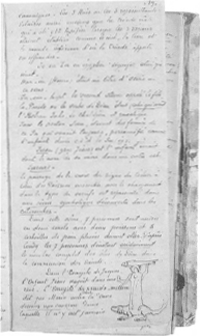 fig. 9
Paul Gauguin, Christ Horus motif from Massey's The natural genesis, copied in 1902 into L'esprit moderne et le catholicisme, p. 39, The Saint Louis Art Museum, gift of Vincent L. Price, Jr in memory of his parents, Marguerite and Vincent L. Price abandoned poetry to undertake philosophical studies on the origins and evolution of religion. His major work, published in London in 1883, was The natural genesis: the second part of the book of the beginnings, containing an attempt to recover and reconstitute the lost origins of the myths and mysteries, types, and symbols, religion and language with Egypt for the mouthpiece and Africa as the birthplace. Massey drew on the nature-myth idea of religion promoted by an Oxford scholar, Max Muller. His school used the comparative study of linguistics to determine the unifying principles of world religions. Adopting this approach, Massey concluded that all religions had originated in Africa and developed in Egypt. For Massey, the Old Testament was merely a compilation of myths the Jews had derived from more ancient cultures, and Jesus himself had grown out of the Egyptian sun god Horus. Massey was already a well-known thinker to readers of Blavatsky's The secret doctrine. By 1896-97, excerpts from The natural genesis, translated into French in a pamphlet Le Jésus historique, reached Gauguin in Tahiti.Ga naar voetnoot50 Throughout L'esprit moderne et le catholicisme, Gauguin praises the spiritual goals of Christianity but indicts the institution of the Catholic Church, which he charges with having only an economic and political interest in the soul. This critique is consistent with Massey, and with the nature-myth school of Max Muller, who argued that comparative study of religion exposed the ‘inevitable decay to which every religion is’ subject.Ga naar voetnoot51 Gauguin seeks to liberate Christianity from the corruptions of the modern church, and lambastes Catholicism for its ‘absurd irrational supernaturalism, unjustified dogmatic authority, violent and oppressive theocratic regimes and its profane cults of devout practices [...].’Ga naar voetnoot52 He imagines that modern society can recuperate the spirit of Christianity once the ‘falsifications and audacious imposture of the Catholic Church’ are eliminated.Ga naar voetnoot53 In L'esprit moderne, Gauguin accepts Massey's basic idea that all religions share a common truth based in myth. Although the primary images of the text are located on the cover, there is one drawing inserted in the text: Gauguin copied out of Massey's The natural genesis a Gnostic design of Christ-Horus, standing on a crocodile and holding a fish (figs. 8 and 9). This interest in esoteric | |
[pagina 84]
| |
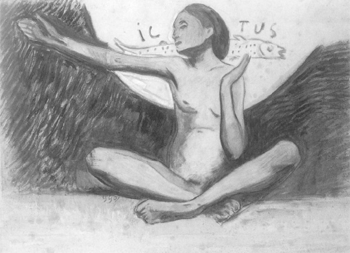 fig. 10 Paul Gauguin, Ictus, 1889, Paris, Daniel Malingue Collection
Christian symbols was not new: a Gauguin watercolour of 1889 (fig. 10) features a fish and its Greek name, ICTUS, the traditional acrostic for Christ. In the watercolour, the fish symbol and its label float behind the head of a nude who sits cross-legged in a Buddhist position before a mystical sphere, a sign of the Egyptian sun-god Horus. The pose both invokes Buddhist gestures and emulates the cross-legged stance of a fifth-century Egyptian sculpture Gauguin drew in the Louvre. The work thus documents Gauguin's early attraction to religious syncretism and the esoteric theories of the spiritualists even before his first Polynesian sojourn. His copy of the Christ-Horus motif as the only illustration in his text indicates his fascination with Massey's theories of religion during his late career. Although Christian iconography still appears in several Polynesian works, Gauguin generally kept the Catholic Church as institution out of his art. One rare exception is Femmes et cheval blanc, a landscape from 1903 (Boston, Museum of Fine Arts), in which Marquesan women frolic in verdant paradise, apparently in harmony with the presence of the white cross of the Christian cemetery visible on the crest of a distant hill. Works such as this, shipped back to Vollard in Paris, neither subverted the Oceanic pastorale that was Gauguin's signature, nor pointedly interrogated the conflicts between Catholic and native cultures. In both his writing and his art, Gauguin's spiritual idealism had a flip side of anti-clericalism. He displayed his sculpture Père paillard (Washington, DC, The National Gallery of Art) near the entrance of his Maison jouir. Here, Gauguin transformed the local Catholic bishop, Joseph Martin, into a horned devil figure, satirising the pious man who was rumoured to have had an affair with a local woman. In L'esprit moderne, Gauguin's campaign against bourgeois convention and religious hypocrisy revolves around issues of morality. In particular, he engages the issue of illegitimacy, condemning the general stigma Christian society imposes on children born outside marriage. | |
[pagina 85]
| |
His concerns over legitimacy probably stem less from worry over his own local children, who were being raised in the communal manner of the Polynesians, than from reflections about his own family history in Europe. Flora Tristan had suffered profoundly from a French system that had refused to recognise her parents' Spanish marriage, and had declared her illegitimate and an outcast. Tristan's identity as a ‘pariah,’ asserted in her writings, is once again relevant. As a consequence of French law, she was denied the paternal inheritance that would ultimately have assured Gauguin's beloved mother Aline, and even the artist himself, a financial security neither ever enjoyed. In Avant et après, Gauguin returns to the issue of his noble heritage in Spain and Peru, claiming descent ‘from a Borgia of Aragon, and a viceroy of Peru,’ yet at the same time from a family that - in more recent times - had had to live like scavengers.Ga naar voetnoot54 It is revealing that the notion of legitimacy and its benefits of uncontested acceptance and entitlement still mattered to a 54-year-old man living in someone else's culture on Hiva Oa and sorting through a lifetime of assumed identities - French, Peruvian, sailor, bourgeois, bohemian, colonial, Polynesian. In this state of perpetually ‘not belonging,’ exaggerated by living in a colony, there was allure in the notion of finally having a lineage somewhere else. Gauguin is now famous for dying in self-imposed exile in the distant Marquesas, but this was certainly not his intention. Less than a year before his death he schemed about returning to France, about staying in the French Pyrenees with de Monfried and taking a three-year period in Spain to find well-known subjects he would paint in fresh ways - ‘the bulls, the Spaniards, their hair plastered with lard.’Ga naar voetnoot55 The land of his maternal ancestors beckoned with the assurance of his personal roots, an authentic biological connection Oceania could never offer. This personal context of his unstable identity as a colonist bridging two worlds, of his abiding anger over a history of illegitimacy, and of his longing for a mythic reunion with personal origins, lies behind his written diatribe against a European culture and a church that presumed to dictate selfhood and destiny through the institution of marriage.Ga naar voetnoot56 In search of what he imagines as ‘an intelligent, just and humanitarian world,’ Gauguin calls for the end of marriage. He argues instead for a culture of free love, in which ‘[...] our mother, our daughter, our sister has the right to earn her bread, to love him who pleases her, has the right to dispose of her body and her beauty [...]. [She] has the right to esteem, as much as the woman who merely sells herself in marriage (by order of the Church); [...].’Ga naar voetnoot57 He argues that marriage and prostitution both commodify women, and that a Christian morality that dictates marriage tacitly endorses prostitution as the option for those who do not care to marry. The tragic loss in all this, he sees, is the possibility of authentic love as it might be experienced outside the restrictions of institutions. Hence his choice of the woodcut on the inside cover of L'esprit moderne (fig. 7). This print embodies his maxim, ‘Soyez amoreuse et vous serez heureuse,’ a theme reprised from the sculpture Soyez amoreuse of 1889 (Boston, Museum of Fine Arts). The pro-feminist aspect of the text comes as a surprise to those accustomed to thinking of Gauguin as a rake and sexual tourist. It reads, in this closing section, as a serious tract in favour of the socialist liberation of women. Some might argue that Gauguin merely intended to justify his own sexual habits of luring Marquesan girls from the nearby convent school. But there is far more to his polemic than this. Here, he directly engages the writing of his grandmother, Flora Tristan, and makes his own modest effort at writing about social reform. Tristan's social theory was deeply imbedded in the utopian socialism of her day. She shared some views with the Fourierists and the Saint-Simonians, but saw herself as a mouthpiece for no one. Gauguin surely did not absorb the intricacies of her work, but he owned some of her books and he knew her to have been a great reformer, an advocate for divorce and a harsh critic of the institution of marriage. She started an organised working- | |
[pagina 86]
| |
class movement that recognised sexual equality and women's emancipation through education and work opportunity. Gauguin valued his copy of Tristan's Promenades dans Londres, a book that recounts her visits to London brothels and includes a fiery condemnation of a society that tolerates prostitution. L'esprit moderne et le catholicisme echoes many of her sentiments. In Tristan's words: ‘let [woman] be taught to earn a living; let her be given an alternative other than selling herself as a young woman to a husband without benefit of love or later to prostitute herself before falling in any case into poverty. [...] These unfortunate women, for the most part, let themselves be seduced; they did not have the courage of hypocrisy, because they had a heart.’Ga naar voetnoot58 Where Tristan and Gauguin agree was on an ideal of greater social and economic freedom for women that protected the partners' mutual respect, permitted the expression of love and resisted the control of the church in matters of private life. Where they differed significantly was on the potential of the institution of marriage: Gauguin, as we have seen, would have abolished it. Tristan's ideal, on the other hand, was a freely chosen marriage, which a woman entered into from a position of education and economic empowerment, rather than having to sell herself to it for financial security. Clearly, Gauguin's agenda was not identical to Tristan's. But his commentary on women in L'esprit moderne pays homage to this writer-ancestor with whom he identified as part-Peruvian, as a social pariah who flaunted the conventions of French bourgeois life, and as a writer of serious treatises on the issues of love and social reform. | |
Avant et aprèsIn his final manuscript, Avant et après, finished in Hiva Oa in early 1903, Gauguin returns to the authorial ‘I’ and to autobiography, but not in the conventional form.Ga naar voetnoot59 In February, Gauguin sent his 241-page text to Fontainas, in yet another (unsuccessful) effort to convince the Mercure de France to publish it. At this point in his literary career, perhaps aware that he was nearing the end of his productivity, Gauguin was a realist: he firmly wanted this book published, but he did not expect a big readership.Ga naar voetnoot60 On six occasions Gauguin dissembles as author, claiming: ‘This is not a book,’ elaborating that ‘a book, even a bad book, is a serious affair.’ Avant et après is a collage of anecdotes, vignettes and loose associations. Gauguin described it as ‘a miscellany of childish recollections, the wherefore of my instincts, of my intellectual development.’Ga naar voetnoot61 Unlike the travel narrative of Noa noa, it is not a unified or Cartesian self that Gauguin presents. Rather, the artist figures himself in shifting terms, registered in the suggestive fragments so appreciated by the symbolists. He jumps about in time, undermining the chronological expectations of biography, memoir and history. He dismisses narrative form as he had dismissed realism in his painting: ‘I should like to write as I paint my pictures - that is to say, following my fancy, following the moon and finding the title long afterwards.’Ga naar voetnoot62 In seeking its publication, he concluded that the work was something other than literature; it was an example of ‘civilization and barbarism face to face.’ He chose his style to be in harmony with his subject, namely himself: ‘undressed like a natural man, and often shocking.’Ga naar voetnoot63 His presumed reader is Parisian, white, male and familiar with the culture of the avant-garde. A sampling of his topics reveals both the common ground of the Petit Boulevard circle, as well as markers of Gauguin's exotic persona. On artists he writes of Cézanne, of Degas, of Daumier, of the beauty of Japanese art, of the negative example of Carolus Duran. He revisits Bernard to chide him for his pride, and Van Gogh to praise him. On writers, he mentions the salons of Mallarmé, the poetry of Poe. He is jealous of Loti's command of adjectives; he holds in awe the Confessions of Rousseau. Of the Marquesas he writes as a witness of an allegedly vanishing culture and as a great defender of native rights in the face of colonial ineptitude. Under this broad umbrella, there is something for any Parisian reader with an interest in modern art. He resists choosing one particular legacy; he opens the tale to new histories. In reading the Mercure de France in Polynesia, he could track the rise of Van Gogh's fame: | |
[pagina 87]
| |
reviews of Vincent's large exhibition at Vollard's in 1897 had declared his deceased friend to be as influential as he himself.Ga naar voetnoot64 Gauguin does not write to set the record straight with firm truths and documentation, but to weave a myth, to start a rumour, to shape a memory or to conjure a dream on the matter of his relations with fellow artists and on much else. Avant et après offers no steadying plumb line for legend to follow. Instead Gauguin shoots a thousand disconnected points of fantasy and selected fact into the void of future memory. By 1903, Gauguin was leery of the fate that befalls dead artists. He writes that in death the artist is completely stripped: ‘With this in mind, I strip myself beforehand. That is a comfort.’Ga naar voetnoot65 He refers here to ridding himself of the stories of his life, to sending out this legacy into the world. His writings would become the link between disparate realities, the way to bridge the profound gap between the atelier des tropiques and its audience half a world away, who still mattered and who would be reading and then even writing his history. Gauguin was right. He did not write ‘a’ book. What he composed was the start of the many other books that would, in time, address the ambitions, motivations and achievements of his Studio of the Tropics. |
|

